Tom McArthur and
Gabriela Pomeroy
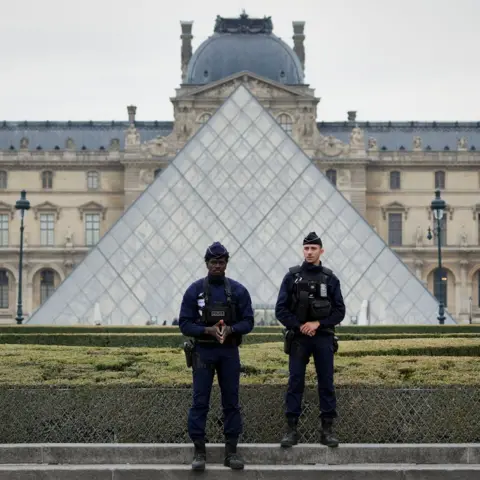 Getty Images
Getty ImagesFrench police are desperate to retrieve priceless jewels stolen from the Louvre in a brazen daylight robbery, but experts have warned it may already be too late to save them.
In Paris on Sunday, thieves broke into the world’s most-visited museum, stealing eight valued items before escaping on scooters, in a daring heist that took about eight minutes.
Dutch art detective Arthur Brand told the BBC he feared the jewels may already be “long gone”, having been broken up into hundreds of parts.
It is highly likely the pieces will be sold for a fraction of their worth and smuggled out of France, other experts have said.
Who may be behind the heist
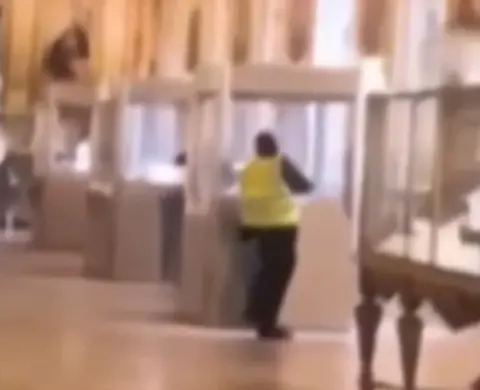 BFMTV
BFMTVThe group were professionals, Mr Brand believes, as demonstrated by the fact they were in and out of the Louvre so quickly.
“You know, as a normal person, you don’t wake up in the morning thinking, I will become a burglar, let’s start with the Louvre,” he said.
“This won’t be their first heist,” he said. “They have done things before, other burglaries. They are confident and they thought, we might get away with this, and went for it.”
In another sign the professionalism of the gang is being taken seriously, a specialist police unit with a “high success rate in cracking high-profile robberies” has been tasked with tracking them down.
Authorities have said they suspect the heist is linked to an organised crime network. Mr Brand says it means the perpetrators will likely have criminal records and be known to the police.
Police on Monday said a vest and equipment left at the scene had been submitted for analysis. Mr Brand suggests DNA evidence would be a likely way the thieves could be caught.
Organised crime groups like these generally have two objectives, Paris prosecutor Laure Beccuau said. “Either to act for the benefit of a sponsor, or to obtain precious stones to carry out money laundering operations.”
Mr Brand thinks it would be impossible to sell the items intact, and he said stealing-to-order for a private collector is something that only happens in Hollywood films.
“Nobody wants to touch a piece so hot,” he explained. “You cannot show it to your friends, you cannot leave it to your children, you cannot sell it.”
Potential £10m price tag
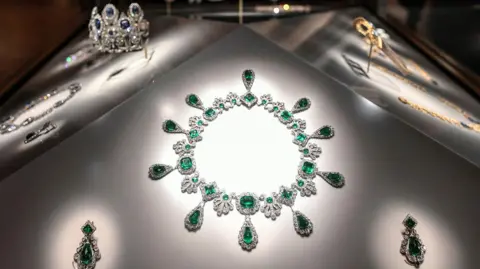 Getty Images
Getty ImagesMr Brand believes the objects will be dismantled and broken up, with the gold and silver melted down and the gems cut up into smaller stones that will be virtually impossible to track back to the Louvre robbery.
Jewellery historian Carol Woolton, who presents the podcast If Jewels Could Talk and was Vogue magazine’s jewellery editor for 20 years, told the BBC the robbers had “cherry-picked” the most important gemstones from the Louvre’s collection.
The “beautiful large flawless stones” would likely be dug out of their mountings and sold, she said, except for the crown from Empress Eugénie which has smaller stones set in it and was “too hot to handle”, she added.
This could explain why it was dropped during the escape, along with one other item, and found by authorities.
Empress Eugenie’s tiara, which was stolen, has rare natural pearls which have a very large value, experts say.
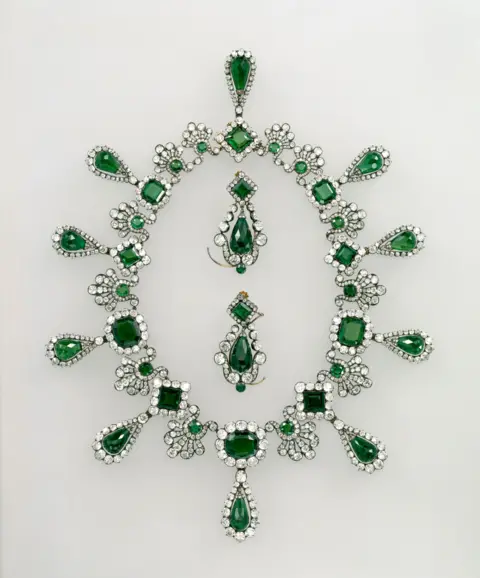 Louvre Museum
Louvre Museum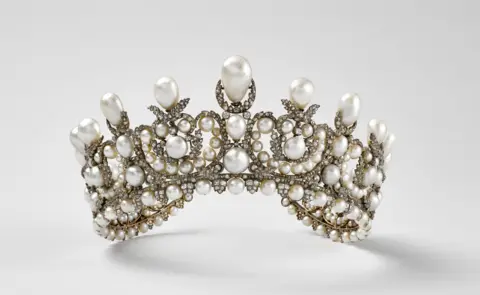 Louvre Museum
Louvre MuseumWhile the items have been described as being priceless, Ms Woolton expects them to be sold for a fraction of their worth.
“They will go to someone who is willing to handle these,” she said. “Everyone will be looking for these – they will take what they can get.”
How much exactly could they fetch in money if sold on? When asked about the potential value of the haul, Mr Brand said the cut-up parts could be worth “many millions”.
The gems and gold stolen could fetch up to £10 million (€11.52m; $13.4m), says Tobias Kormind, managing director of 77 Diamonds, an online jeweller.
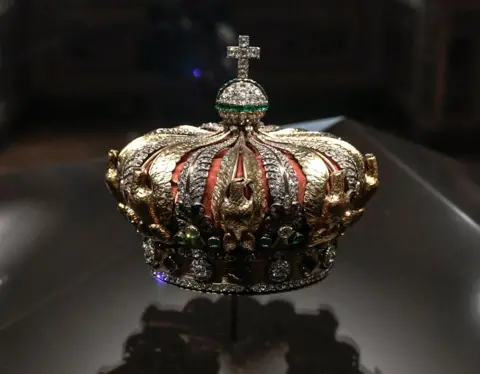 Getty Images
Getty ImagesHe told the BBC the gang would need a skilled expert to remove the gems, and a professional diamond cutter to change the larger recognisable stones.
Smaller stones that were not easily identifiable could be sold immediately and while it was hard to tell the exact price of all the stones stolen, the larger ones could be worth around £500,000 each, he said.
“There are at least four of that size, so adding all of those up plus the gold, you are probably approaching £10m,” he said.
“The diamond and gemstone market is liquid and there are many buyers on the fringes that don’t ask too many questions.”
There are hopes that the items could reappear intact one day – but those hopes are narrowing as the days pass.
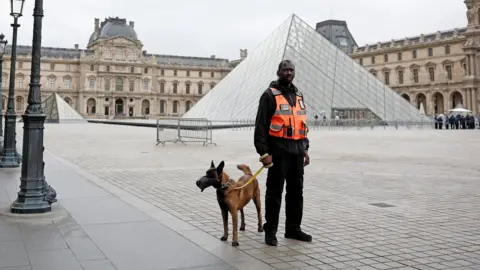 Reuters
ReutersThere is a precedent – the Cartier exhibition at the V&A Museum features an item of jewellery stolen in 1948 before reappearing in an auction several decades later.
What is certain is many in France are deeply shocked by the Louvre heist, having felt an emotional attachment to the jewels.
“We don’t necessarily like jewellery because it’s a question of power, and that doesn’t necessarily have a good connotation in France,” Alexandre Leger, head of heritage at French jeweller Maison Vever, said.
“But inevitably, what was stolen belonged as much to you as it did to me. It belongs to France, so everyone owns a little piece of these objects, just as everyone owns a little piece of the Mona Lisa.
“It’s as if someone had stolen the Mona Lisa from us… Someone stole France.”
Additional reporting by Izumi Yoneyama.



